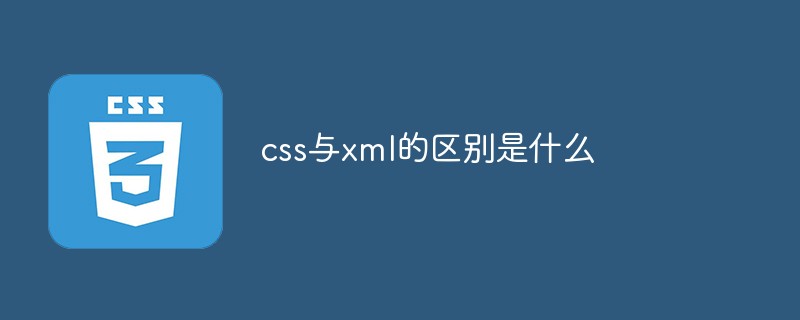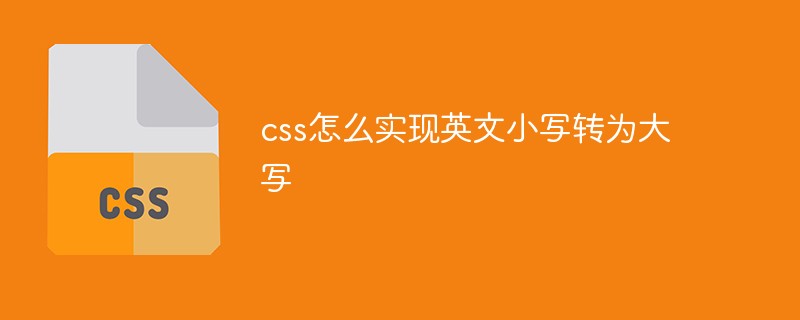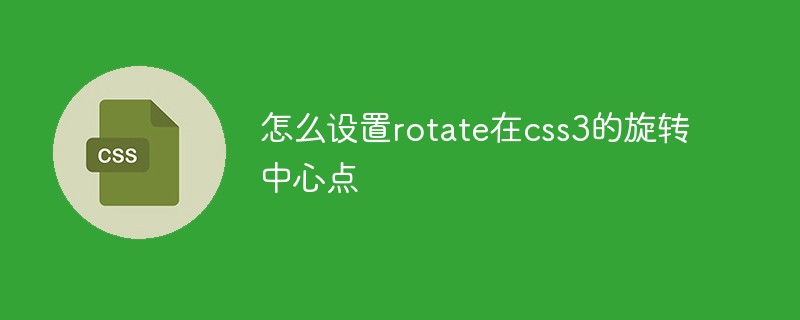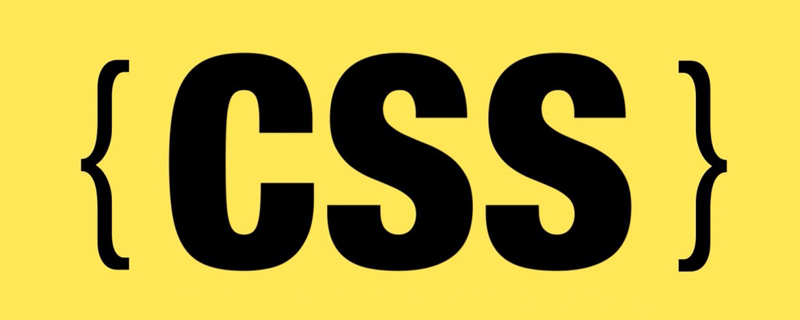This article will take you through CSS variables and introduce the things no one tells you about CSS variables. It has certain reference value. Friends in need can refer to it. I hope it will be helpful to everyone.

CSS Variables are great, but do you know their details? [Recommended learning: css video tutorial]
1. Be careful! important
and CSS Using variables together !important is a bit weird, as shown in the following demonstration:
p {
--color:red !important;
color:var(--color);
color:blue;
}What color will the p element above be? You would think it is red red, and think that it is executed as follows:
p {
color: red !important;
color: blue;
} However, it is not red red, because the actual execution is like this:
p {
color: red;
color: blue;
} In this case, !important is not part of color, but adds properties to the --color variable. Specification specifies:
Note: Custom attributes can contain
!important, but they will be automatically deprecated by theCSSparser Delete in, This will change the custom attribute important into a hierarchy. In other words, it's not that!importantdoesn't work, it's just ignored before syntax checking.
You will understand it easier with the following example:
p {
--color: red !important;
--color: blue;
color: var(--color);
}The above code will give the p element red color, and the analysis is as follows:
We have two declarations for the
--colorattribute, so we need to solve its level problem. The first definition has!important, so its level is relatively highThen
var(--color)will be appliedred !importantSo we will get
color: red
Let’s look at a piece of code again :
p{
--color: red !important;
--color: blue;
color:var(--color); color: pink; <!-- 这里我改写的颜色值 -->
}According to the above logic, we will finally get the paragraph color of pinkpink.
A very important rule is that CSS variables (custom properties) should be treated as ordinary properties, not just variables that store values.
Custom attributes are common attributes, so they can be defined on any element. They can be solved using the inheritance and cascading rules of common attributes. You can use
@mediaand other conditional rules perform conditional processing, which can be used for thestyleattribute ofHTML, which can be read and set usingCSSDOM, etc.
#2. They cannot store urls
One day you will stumble upon this common limitation.
You can't do this ❌
:root {
--url:"https://picsum.photos/id/1/200/300";
}
.box {
background:url(var(--url));
}You should do this ✅
:root {
--url:url("https://picsum.photos/id/1/200/300");
}
.box {
background:var(--url);
}This restriction is related to how url() is parsed. It's a bit tricky to parse, so I recommend you go to Stack Overflow Answer to find the answer. As you can see, we can easily fix this by assigning the entire url() to a variable.
3. They can make invalid values valid
This is also one of my favorite points, and also a troublesome point.
Let’s start with a basic case:
.box {
background: red;
background: linaer-gradient(red, blue);
}.box The element will have a red and blue gradient effect, right? Yet it is pure red. Well, I typed linear-* wrong. I can easily spot this error because the browser crosses out the row and enables the background style of the previous row.

Now, let’s introduce the variables:
.box {
--color:red;
background: var(--color);
background: linaer-gradient(var(--color), blue);
}Test this code and you will find that the background color becomes transparent. Our second background color was not crossed out by the browser, but the first background style was crossed out. Because the second background style overrides the first one.

Why does this happen?
When we use variables as attributes, the browser will only evaluate the value at "compute value time" because we need to know the contents of the variable first. In this example, when the browser does the chaining, it will consider the attribute value to be valid, and then it will become invalid.
在我们的例子中,浏览器做级联时,认为最后一个声明是有效的。但是到评估值的时候,最后一个声明被认定是无效的,所以它被忽略。我们不会回头查看,因为我们在级联的时候已经处理过了,所以我们最后会得到一个透明的背景颜色。
你可能认为这种行为不符合逻辑的,但是它确符合逻辑。因为一个值是有效还是无效时基于 CSS 变量的,所以浏览器一开始时不能真正知道。
.box {
--color:10px; /* a "valid" variable */
background: red; /* a "valid" declaration */
background:linear-gradient(var(--color),blue); /* a "valid" declaration that will override the first one */
/* The result is an "invalid" value ... */
}如果一个属性包含一个或者更多的
var()函数,而且这些函数都是语法有效的,必须假定整个属性的语法在解析时有效。当var()函数被替代后,在“计算值时间”才做语法检查。
简单来说:CSS 变量将属性的状态作为一个后备,知道我们对其进行评估值。当评估值之后,我们可以说它是有效的或者无效的了。如果它是无效的,那么久太晚了,因为我们不会再回头使用上一个。
4. 它们可以不被使用单位
大多数的教材或课程都会展示下面的代码给你:
:root {
--p: 10px;
}
.box {
padding: var(--p);
}但是,你也可以这么做:
:root {
--p: 10;
}
.box {
padding: calc(var(--p)*1px);
}变量中拥有单位并不是强制的。
5. 他们可以动起来
最初,CSS 变量被定义是没有动画属性的。
Animatable: no
但是,事情发生了变化,我们通过 @property 修饰,CSS 变量可以做一些动画或者渐变。这个特性目前浏览器支持比较低,但是也是时候了解下了。
6. 它们不可以存储 <span style="font-size: 18px;">inherit</span> 值
我们考虑下面的例子:
<div class="box"> <div class="item"></div> </div>
.box {
border:2px solid red;
}
.item {
--b:inherit;
border:var(--b);
}直觉告诉我们,.item 将会即成父元素的 border,因为 --b 包含 inherit,但是并不是。
正如我们在第1点上说到的,我们错误认为 CSS 变量会简单存储值,然后供我们往后使用,然而并不会。CSS 变量(自定义的属性)是普通属性,所以 inherit 会被应用并不会存储值。
例子:
.box {
--b:5px solid blue; /* we define the variable on the parent */
}
.item {
--b:inherit; /* the child will inherit the same value so "5px solid blue"*/
border:var(--b); /* we will have "5px solid blue" */
}正如你所看到的,公共属性应用,逻辑上才可以继承 inherit。
上面的写法是鸡肋的,因为
CSS变量默认是继承的。
7. 它们可以是空值
是的,你可以想下面这么做:
.box {
--color: ;
background:var(--color);
}笔记:
<declatation-value></declatation-value>声明值必须代表一个标记,所以变量空值需要有一个空格。比如--foo: ;是有效的,var(--foo)将会返回一个空格。--foo:;是无效的。如下:
.box {
--color:; ❌
background:var(--color);
}
这个小技巧可以配合预设特性实现一些想不到的效果。
一个例子你就会明白这个技巧:
.box {
background:
linear-gradient(blue,transparent)
var(--color,red); # 没有发现--color,取默认值 red
}<div class="box"> I will have `background:linear-gradient(blue,transparent) red;` </div> <div class="box" style="--color:green"> I will have `background:linear-gradient(blue,transparent) green;` </div> <div class="box" style="--color: ;"> I will have `background:linear-gradient(blue,transparent) ;` </div>
第一个
box没有定义变量,所以预设值被使用第二个有定义的变量,所以它被使用
最后一个设定了一个空的变量值,所以空值被使用。使用后就好比不需要
var(--color, red)一样
空值允许我们移除属性中 var() 声明,在一个复杂的值中使用 var() 作用挺大。
8. CSS 变量不是 C++ 变量
很不幸的是,很多开发者趋向于比较 CSS 变量和其他语言的变量,然后在他们逻辑上有一大堆的问题。正是这个原因,我都不想叫他们变量而是自定义属性,因为他们确实是属性。
很多人都想这么做:
:root {
--p:5px;
--p:calc(var(--p) + 1px); /* let's increment by 1px */
}:root {
--x: 5px;
--y: 10px;
/* let's do a variable switch */
--c: var(--y);
--y: var(--x);
--x: var(--c);
}.box {
--s: 10px;
margin:var(--s); /* I want 10px of margin */
--s: 20px;
padding:var(--s): /* then 20px of padding */
}以上的示范都不能工作。第一个和第二个都有无效值,因为它们都有嵌套依赖。最后一个例子,padding 和 margin 都是 20px,因为级联会获取第二个 --s: 20px 的变量去应用。
这很不幸,你应该停止用 C++, Javascript, Java 等语言的思维去思考 CSS 变量,因为它们有自己逻辑的自定义属性。
9. 它们只能从父元素传递给子元素
请记住这个黄金规则:CSS 变量总是从父元素(或者说祖先元素)传递给子元素,不会从子元素传递给父元素或兄弟元素。
:root {
--c1: red;
--c2: blue;
--grad: linear-gradient(var(--c1),var(--c2);
}
.box {
--c1: green;
background:var(--grad);
}你可以会认为 .box 背景颜色是 linear-gradient(green, blue) ? 不,背景颜色会是 linear-gradient(red, blue)。
root 元素是 DOM 元素的最上层,所以它是 box 的祖先元素,我们应用上面的黄金规则知道,子元素的 --c1 是跑不到 linear-gradient(var(--c1),var(--c2) 中的。
10. 它们可以有奇怪的语法
最后一个也是有趣的一个。
你知道你能像下面这样写么?
body {
--:red;
background:var(--);
}很神奇,对吧?是的,CSS 变量可以仅使用两节虚线定义。
你会认为上面已经很疯狂了?看下下面这个:
body {
--?:red;
--?:green;
--?:blue;
--?:orange;
}是的,你还可以用表情来定义一个变量。
CSS 变量允许你以 -- 开头的任何内容。比如:
body {
---------:red;
background:var(---------);
}又比如:
body {
--:red;
--:blue;
background:linear-gradient(90deg, var(--),var(--));
}其实上面是这样的:
当然你不会使用这么稀奇古怪的东西在你的实际项目中,除非你想让你的老板或合作开发者发疯
总结
不知不觉有很多的内容了,你不需要马上就记住所有的内容。我尽力将这些不为人知的 CSS 变量整理了出来。如果有一天你工作中需要这些知识点,你可以回头来看。
英文原文地址:https://dev.to/afif/what-no-one-told-you-about-css-variables-553o
本文是译文,采用意译。
(学习视频分享:web前端)
The above is the detailed content of Things you may not know about CSS variables!. For more information, please follow other related articles on the PHP Chinese website!
 css ul标签怎么去掉圆点Apr 25, 2022 pm 05:55 PM
css ul标签怎么去掉圆点Apr 25, 2022 pm 05:55 PM在css中,可用list-style-type属性来去掉ul的圆点标记,语法为“ul{list-style-type:none}”;list-style-type属性可设置列表项标记的类型,当值为“none”可不定义标记,也可去除已有标记。
 css与xml的区别是什么Apr 24, 2022 am 11:21 AM
css与xml的区别是什么Apr 24, 2022 am 11:21 AM区别是:css是层叠样式表单,是将样式信息与网页内容分离的一种标记语言,主要用来设计网页的样式,还可以对网页各元素进行格式化;xml是可扩展标记语言,是一种数据存储语言,用于使用简单的标记描述数据,将文档分成许多部件并对这些部件加以标识。
 css3怎么实现鼠标隐藏效果Apr 27, 2022 pm 05:20 PM
css3怎么实现鼠标隐藏效果Apr 27, 2022 pm 05:20 PM在css中,可以利用cursor属性实现鼠标隐藏效果,该属性用于定义鼠标指针放在一个元素边界范围内时所用的光标形状,当属性值设置为none时,就可以实现鼠标隐藏效果,语法为“元素{cursor:none}”。
 rtl在css是什么意思Apr 24, 2022 am 11:07 AM
rtl在css是什么意思Apr 24, 2022 am 11:07 AM在css中,rtl是“right-to-left”的缩写,是从右往左的意思,指的是内联内容从右往左依次排布,是direction属性的一个属性值;该属性规定了文本的方向和书写方向,语法为“元素{direction:rtl}”。
 css怎么实现英文小写转为大写Apr 25, 2022 pm 06:35 PM
css怎么实现英文小写转为大写Apr 25, 2022 pm 06:35 PM转换方法:1、给英文元素添加“text-transform: uppercase;”样式,可将所有的英文字母都变成大写;2、给英文元素添加“text-transform:capitalize;”样式,可将英文文本中每个单词的首字母变为大写。
 css怎么设置i不是斜体Apr 20, 2022 am 10:36 AM
css怎么设置i不是斜体Apr 20, 2022 am 10:36 AM在css中,可以利用“font-style”属性设置i元素不是斜体样式,该属性用于指定文本的字体样式,当属性值设置为“normal”时,会显示元素的标准字体样式,语法为“i元素{font-style:normal}”。
 怎么设置rotate在css3的旋转中心点Apr 24, 2022 am 10:50 AM
怎么设置rotate在css3的旋转中心点Apr 24, 2022 am 10:50 AM在css3中,可以用“transform-origin”属性设置rotate的旋转中心点,该属性可更改转换元素的位置,第一个参数设置x轴的旋转位置,第二个参数设置y轴旋转位置,语法为“transform-origin:x轴位置 y轴位置”。


Hot AI Tools

Undresser.AI Undress
AI-powered app for creating realistic nude photos

AI Clothes Remover
Online AI tool for removing clothes from photos.

Undress AI Tool
Undress images for free

Clothoff.io
AI clothes remover

AI Hentai Generator
Generate AI Hentai for free.

Hot Article

Hot Tools

Zend Studio 13.0.1
Powerful PHP integrated development environment

Notepad++7.3.1
Easy-to-use and free code editor

Atom editor mac version download
The most popular open source editor

SAP NetWeaver Server Adapter for Eclipse
Integrate Eclipse with SAP NetWeaver application server.

MinGW - Minimalist GNU for Windows
This project is in the process of being migrated to osdn.net/projects/mingw, you can continue to follow us there. MinGW: A native Windows port of the GNU Compiler Collection (GCC), freely distributable import libraries and header files for building native Windows applications; includes extensions to the MSVC runtime to support C99 functionality. All MinGW software can run on 64-bit Windows platforms.








